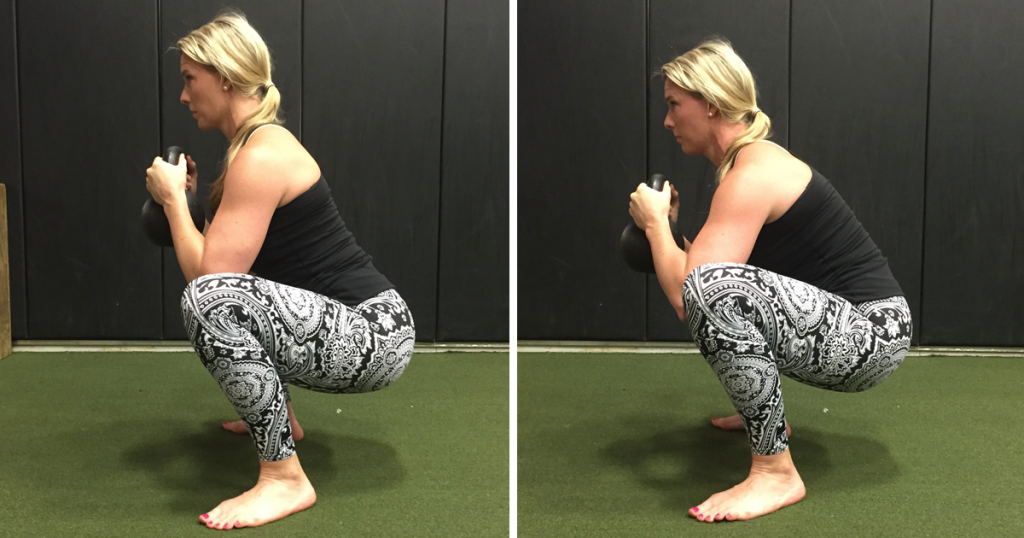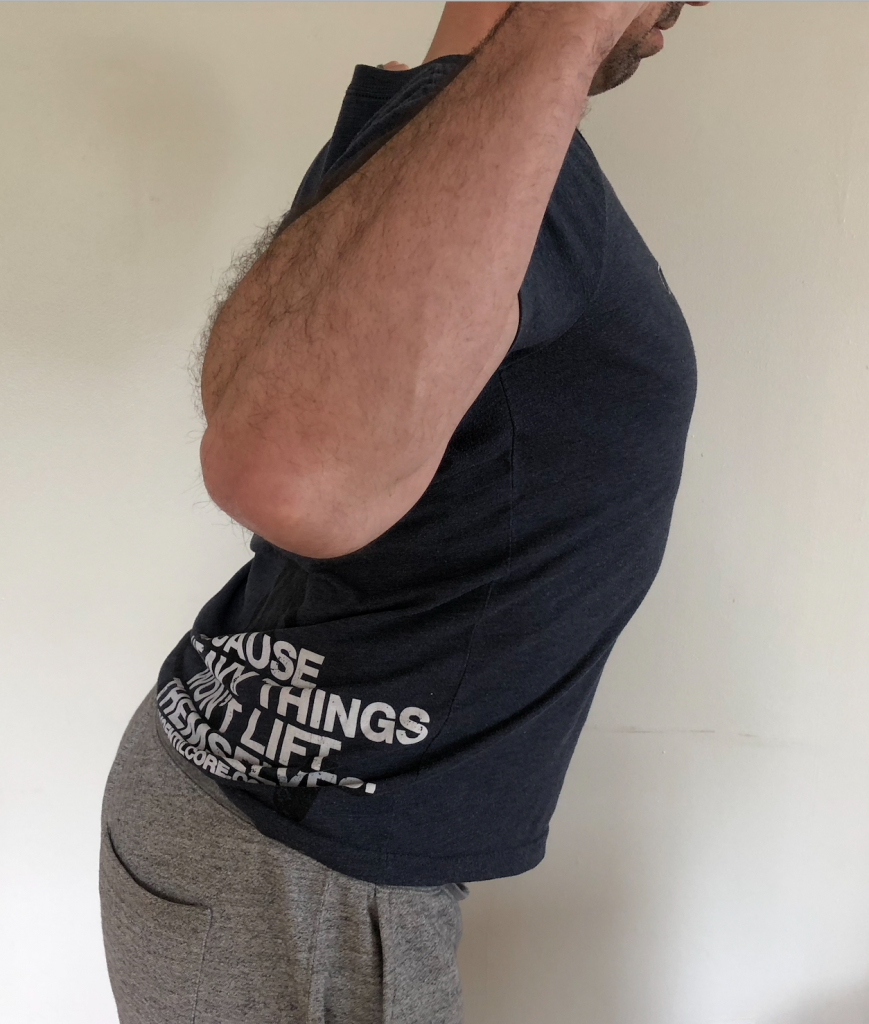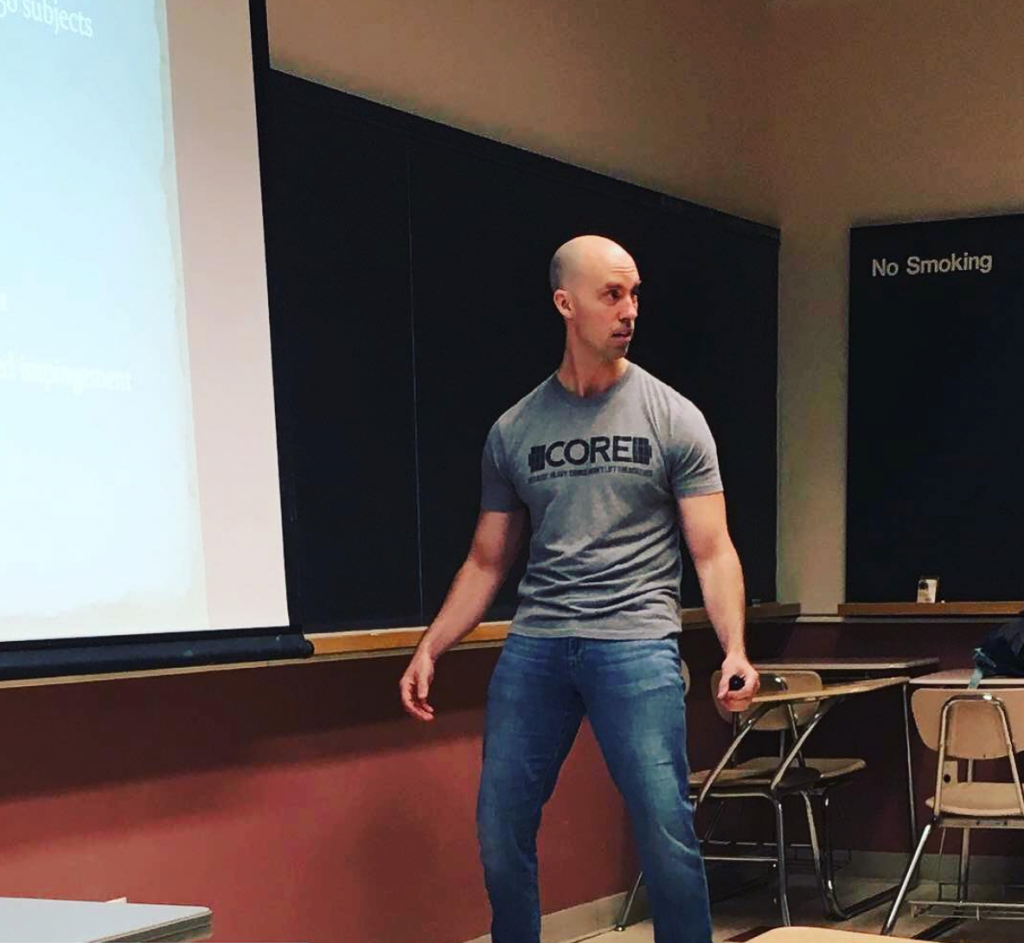I had a new client start at CORE recently who, before we even met in person, let it be known that 1) he hated techno and 2) he hated squats.
Well, why don’t you let me know how you really feel?
Personally, whenever I email someone for the first time, my approach is to just, you know, introduce myself, say I’m a big fan, and maybe butter them up with a savory compliment like “oh, and your cat’s adorable.”
I generally refrain from taking a proverbial shit on the things the person on the other end enjoys:
“…and while I’m at it, Tony, I also hate 8o’s cartoons, cheese, rainbows, and your kid.”
I’m exaggerating of course, but once I dug a little deeper and had a bit more back and forth with this individual I got a better sense of his lack of enthusiasm towards squatting.1

The Smash, Thrash, and Trash Method
When “Ken” came in for his initial assessment he noted that he had, at one point, enjoyed squatting.
Admittedly, those days were more than a decade ago, and despite his current disdain for all things squatting, he was still very much interested in putting them back into his training repertoire and giving them a go again.
The obvious question from me was, “why?”
“If you don’t like back squatting and more to the point, they hurt, why insist on doing them? We can also perform other variations – Goblet, Front, Zercher – that may be a little more back friendly.”
“That’s the thing,” he said, “they didn’t always hurt. When I trained all through college and into my early 30s I never had any issues.”
“But then, you know, I became more sedentary due to life, was stubborn and not taking into consideration I wasn’t 25 anymore, and things just fell apart.”
SIDE NOTE: “Ken” is 47, works long hours mostly at a desk, and I can’t stress this enough, hates techno…;o)
To speed things up all I’ll say is that, while Ken isn’t the most supple person in the world, nothing during his initial assessment came up as a stern red flag or required an exorcism. Sure, he had a few aches and pains, but nothing outside of the normal “niggles” that come with the territory of lifting heavy things for a large portion of one’s life.
I did notice with his passive vs. active squat screen that his active ROM was limited (while his passive ROM was pretty darn okay).
Pertinent information. And if you want to know why that’s pertinent information read the article hyperlinked a sentence above this one.
He also noted he had worked with several trainers in the past who, like me, noticed his lack of ROM with his active squat.
Seriously, read the article.
It’ll help.
As a result he was used to being given a laundry list of hip mobility drills in addition to a plethora of aggressive soft tissue “smashes” to perform daily:
A1. Take a 88 lb barbell and roll it over your thighs. Have someone stand on it and jump up and down for added pressure. Doesn’t that feel great!?
A2. Take a lacrosse ball and poke around in your glutes. If you feel nothing, glue on some razor blades to make it more challenging. Splendid!
A3. If neither of those work, go get a chainsaw. RELEASE.
brb
Moreover, Ken was also given poor advice and told to arch his lower back aggressively whenever he squatted because, #powerlifting.
As a result, whenever he hit a certain depth – usually juuuuust as he passed 90 degrees of hip flexion – he’d compensate with more lumbar flexion and exhibit what’s often referred to as “butt wink.”

Photo Credit: GirlsGoneStrong.com
Again, pertinent information.
No wonder his back always hurt when he squatted:
- His issue wasn’t a mobility issue, but rather a POSITIONING issue.
- Squat cues that work for powerlifters usually don’t work well with non-powerlifters.
Alignment Affects ROM
To be clear: I am not some anti-anterior pelvic tilt lobbyist.
Anterior pelvic tilt is normal.
There’s a natural lordotic curve to the lumbar spine which is accompanied with a slight forward/anterior tilt of the pelvis.
It’s when it becomes excessive – or people are encouraged to seek it out – that it can (not always) elicit negative repercussions.

Ross et al (2014) noted that:
In 3D modeling of pelvic motion from x-rays of test subjects an increase of anterior pelvic tilt of 10 degrees resulted in:
- Decreased hip flexion by 6 degrees.
- Decreased hip internal rotation of 15 degrees.
- Decreased abductions of 8.5 degrees.
- Increased contact with positions of impingement.
- Being put into Hufflepuff.2
In short: more anterior tilt (may) require more spinal motion during squatting exercises compared to more posterior tilt.
The dotted section(s) to the left represent the acetabulum (or hip socket). As you move down from A to C we lose site of the acetabulum due to increased anterior pelvic tilt. This will incite increased bone on bone contact – or impingement – sooner as we go deeper into a squat.
Now, I am not suggesting we all walk around in more posterior pelvic tilt like a bunch of Ed Grimley wannabes:

However, what I am suggesting is that nudging a little more posterior pelvic tilt so our clients/athletes get out of their aggressive anterior pelvic tilt (and closer to neutral) may be the more appropriate long-term play.
Sure, it may entail “some” releasing of this and “some” mobilizing of that…but not as much as most people think.
Much of the time the more pertinent approach is to have your clients adopt a better bracing strategy in addition to spending more time strengthening the anterior core and glutes (both of which aid in posterior pelvic tilt).
Likewise, I don’t feel cuing people to “arch their lower back” during a squat is beneficial. As pointed out above, increased anterior pelvic tilt resulted in increased impingement of the hip. Once someone runs out of room in his or her’s hips, in order to squat deeper they have to gain ROM elsewhere.
Their soul lower back.
Moreover, the reason many powerlifters adopt a hard arch when they squat is more out of necessity than because it’s better.
- They wear gear/squat suits (that require an aggressive arch in order to hit passable depth).

Photo Credit: EliteFTS.com
- People who don’t compete, don’t wear squat suits (and “passable” depth is arbitrary and highly individual anyway).
Circling back to Ken (remember him?), all I had him do in our initial session(s) was to appreciate POSITION. I took away the cue to arch his lower back, and instead had him focus more on posteriorly tilting his pelvis to scoot him closer to neutral (which, remember, is STILL an anterior tilted position).
He was able to squat pain free AND was able to squat deeper without “falling” into that butt wink posture.
I think he’s beginning to like squats again.
Tiesto?
Not so much.



